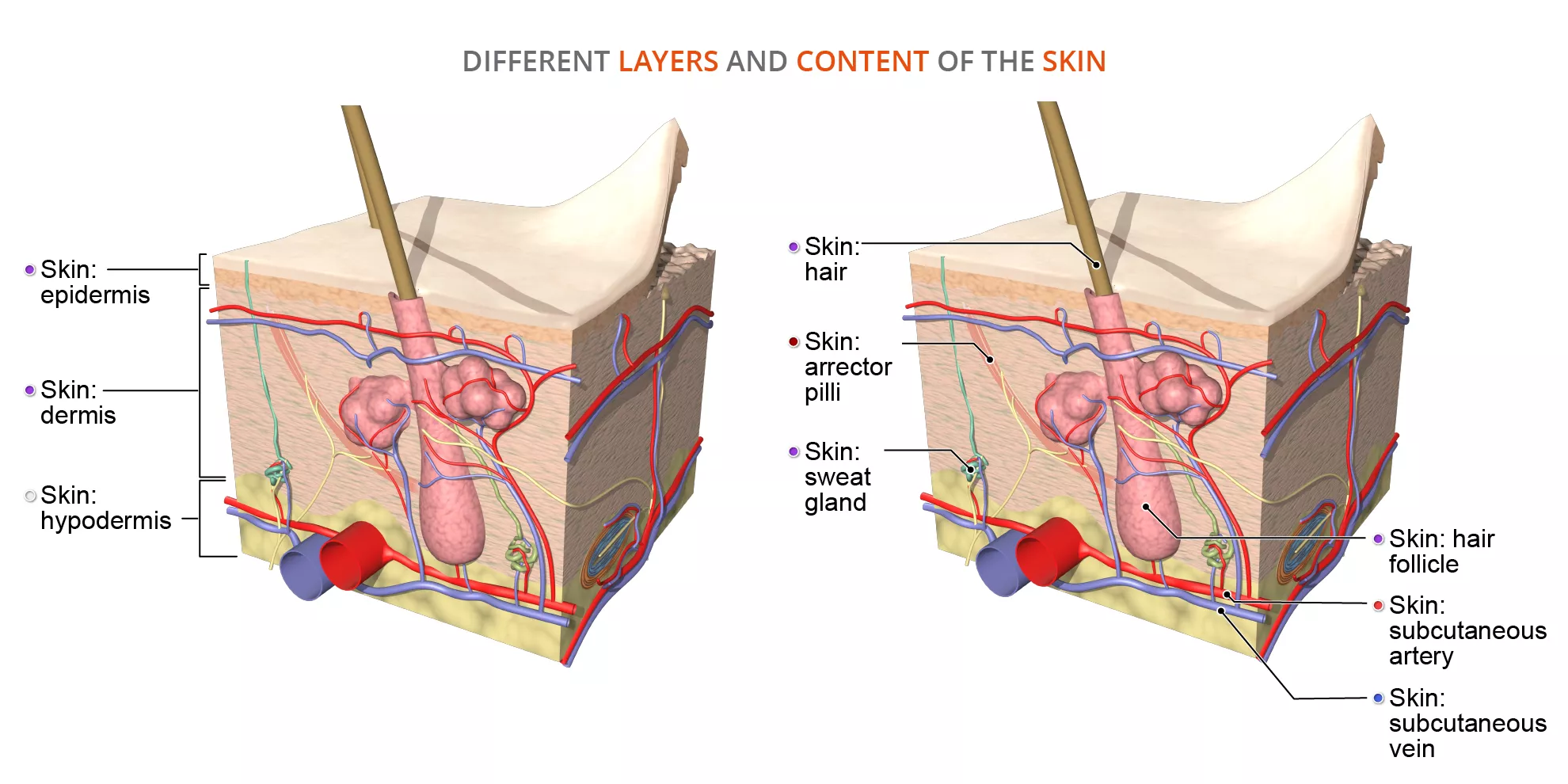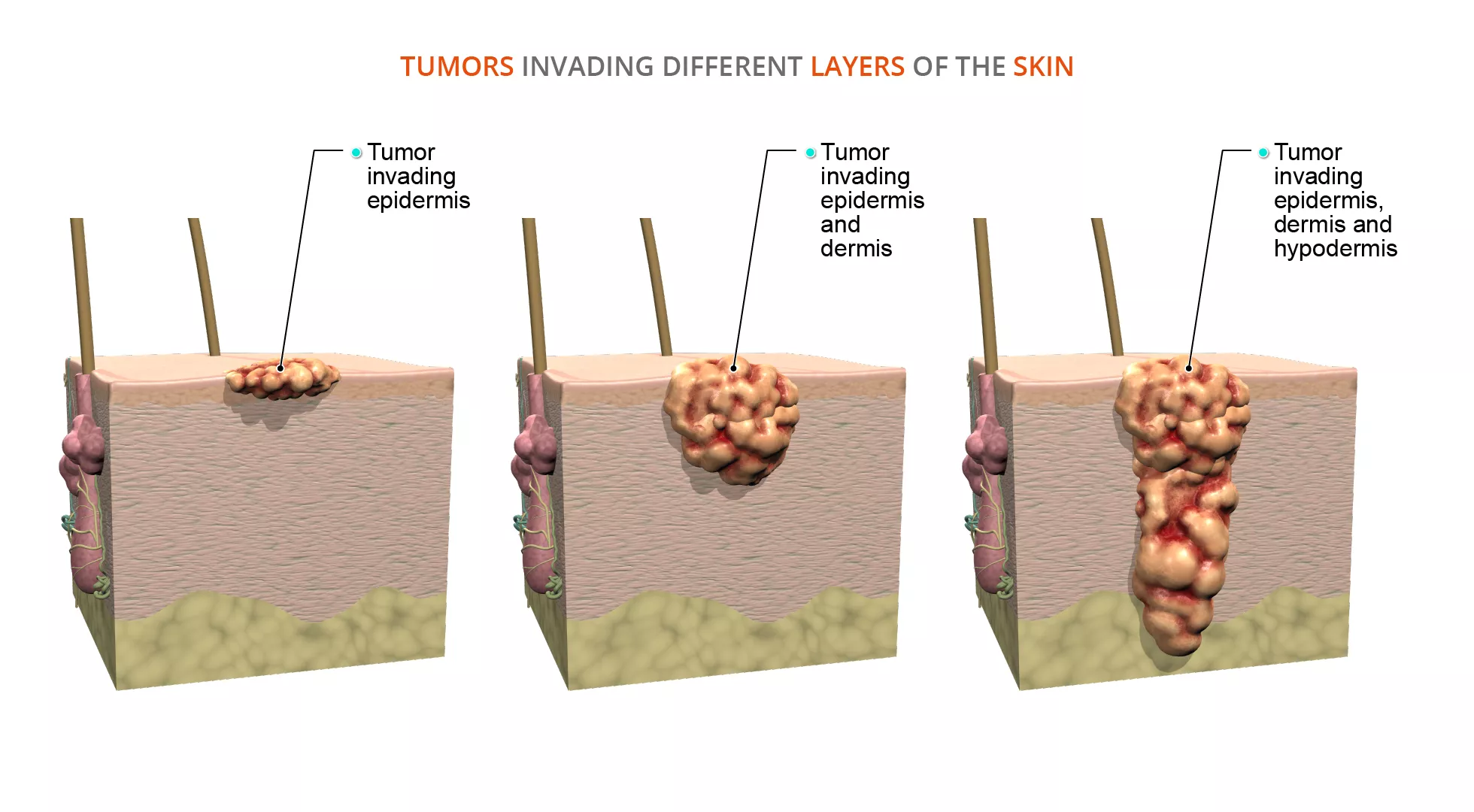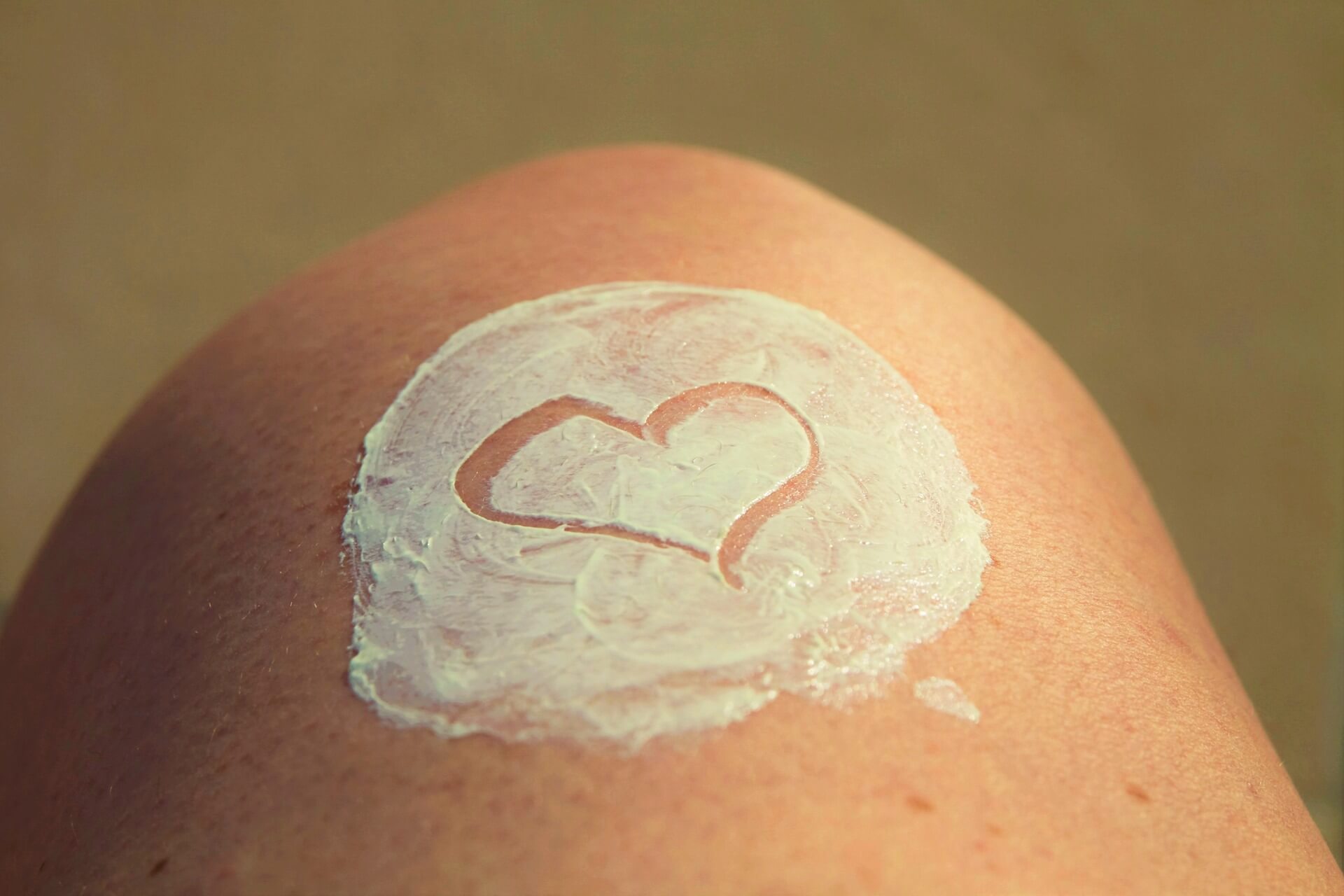What is normal for your skin? As part of November’s Healthy Skin Awareness Month, Primal Pictures dives deep into the fundamentals. Your skin reveals a lot about your overall health, and identifying the causes and signs of skin damage – such as too many UV rays, abnormal moles, or normal aging – will help you understand how to keep it healthy.
What is the function of our skin?
Do you know how amazing your skin is? It accounts for 15% of your body weight and has several important functions. These include:
- Protection – skin is effective at protecting us from trauma and acts as a barrier to bacteria and viruses
- Thermoregulation – 80% of heat is lost through our skin
- Cutaneous sensation – this process allows us to sense touch, pressure, vibration, tickle, temperature and pain
- Excretion – through sweat we secrete waste products, the evaporation of which aids in lowering body temperature
- Absorption – the oily secretions of the sebaceous glands prevent both the absorption of water and excessive evaporation
- Vitamin D synthesis – our body uses UV rays to produce vitamin D and this all begins in our skin
What makes up our skin?
Our skin is composed of the following layers:
- Epidermis
- Dermis
- Hypodermis (subcutaneous tissue)
These are part of the integumentary system that includes nails, hair and sweat glands.

The epidermis is the tough outer layer that forms a water barrier between our body and the environment. New skin cells are made each month, travelling up from the bottom part of the epidermis to the top, eventually shedding into flakes of dust. Within this layer are cells that are part of your immune system and melanin, which contributes to skin color.
The dermis is the thick inner layer and is more complex than the epidermis. It contains blood vessels with fresh blood carrying the oxygen and nutrients skin needs to be healthy. The root of each hair starts in this layer and is attached to a muscle that contracts when you are cold or scared, giving you goose bumps. The dermis also contains sweat glands that rid your body of waste products and keeps you cool, and oil glands which keep your skin soft and smooth and protects against infections (you get acne if your body makes too much). The nerve endings that tell your brain how to react upon stimuli, for example if something is too hot or cold, reside here as well. And lastly, it holds collagen which helps skin keep it shape. But when it stretches a lot, like during pregnancy, it can tear and result in stretch marks.
The epidermis and dermis layers rest on the hypodermis, or subcutaneous layer. Blood vessels and nerve cells in the dermis get bigger and join the rest of your body from here. Fat is deposited and stored within the hypodermis, to cushion your body’s internal organs against hard impact, bumps and falls. It is also responsible for regulating your body temperature.
The most common types of skin damage
Changes in skin thickness
Did you know our feet have the thickest skin and our eyelids have the thinnest? The epidermis layer of skin can be up to 1.5mm thick on our feet and palms of our hands because they are more exposed to friction and abrasion. It is this thick because it has an extra layer called the stratum lucidum.
However, with age skin becomes thinner, and lifestyle factors, skin damage and medication all contribute to how thin your skin can become. Thin skin is more likely to bruise and tear easily, and with less fat in the hypodermis layer it will look less plump too.
Changes in skin color
There are three pigments that contribute towards skin color: melanin, hemoglobin and carotene. Melanin protects the skin and underlying tissue from harmful UV radiation. Where there is increased exposure to sunlight more melanin is produced, and this gives our skin a darker appearance. Your skin color is unique to you, so it is important to know when changes occur to your body.
Skin needs sufficient levels of UV light for the synthesis of vitamin D, but at the same time it needs to be able to protect itself as too much exposure to these rays can cause damage.
So, if you are thinking of going on a tanning bed this winter, think again. Our bodies look “tanned” as more melanin has been produced, however this is a sign your body is trying to protect you from harmful UV radiation.
Changes in mole appearances
Everyone’s skin is different, and it is important to know what is normal for your skin and what is not. We all have about 10-50 moles in all shapes, colors and sizes, so it is important to be conscious of yours as any changes could indicate health issues.
Moles develop due to a benign, localized overgrowth of the cells called melanocyte, which produce melanin and are perfectly normal characteristics of our skin (just like freckles or age spots).
However, some mole changes may indicate skin cancer. How to check your moles? It’s as simple as ABCDE.
- A is for asymmetrical shape. One half looks different to the other.
- B is for border. Are the edges irregular?
- C is for color. Has the color changed or become uneven?
- D is for diameter. Has the mole grown larger then 6mm?
- E is for evolving. Is the mole going through all the above changes and more including itchiness or bleeding?
What are the effects of excessive skin damage?
Skin problems affect everyone from acne to eczema, dermatitis to psoriasis, but how do you know when it could be cancer?
Common risk factors for skin cancer include age (most people are over 50), unusual moles and existing skin conditions that can lead to the development of skin cancer if left unchecked.
There are two types of skin cancer:
- Melanoma – abnormal growth in the pigment of the skin more likely to spread to other organs
- Non-melanoma – begins in the basal cells or squamous cells in the epidermis; more common than melanoma skin cancer and less likely to spread to other organs

Treatments vary for each type, but the most common is surgery to remove the tumor completely and prevent its spread. This may be combined with radiotherapy or chemotherapy before surgery to shrink the tumor, or after surgery to remove any remaining cancer cells.
You should see a doctor if you notice any changes in the color of your skin, changes to moles (as per the section above), any new lumps or painful ulcerations that may bleed.
How can we protect our skin?
Although many of us enjoy having a tan, protecting ourselves from the sun’s harmful UV rays is a must. The top tips below will bring you closer to having your healthiest skin.
- Apply a sun cream of SPF 30 or higher, even in winter or on cloudy days, as it will slow the irreparable damage from the sun.
- In summer, wear a hat, sunglasses and clothing that covers your arms and legs. And if you really want a tanned look use a self-tanner or moisturizer.
- Refrain from smoking as cigarettes speed up your skin’s aging process, causing it to lose its elasticity faster and making wounds take longer to heal.
- Use gloves while handling harsh detergents and cleaning products, and moisturize your skin after.
- Wash gently with lukewarm water and a mild cleanser before bed as it rids skin of the build-up from the day. Scrubbing can irritate it, especially if you have acne.
- Changing your pillowcases once a week can help you sleep better and make you less stressed and more relaxed, which is good for your skin.
- Know your skin type – whether it’s dry, oily or combination — and choose the right products and routine.
- And finally, eating a healthy diet and drinking lots of water can leave you looking and feeling great. Food high in vitamin E such as almonds and avocados may also keep your skin supple for longer.
The images used in this piece have been taken from Primal’s Anatomy & Physiology and Disease & Conditions module. To learn more about this or other Primal digital anatomy and physiology content – please fill in the form here and our team will be in touch.
